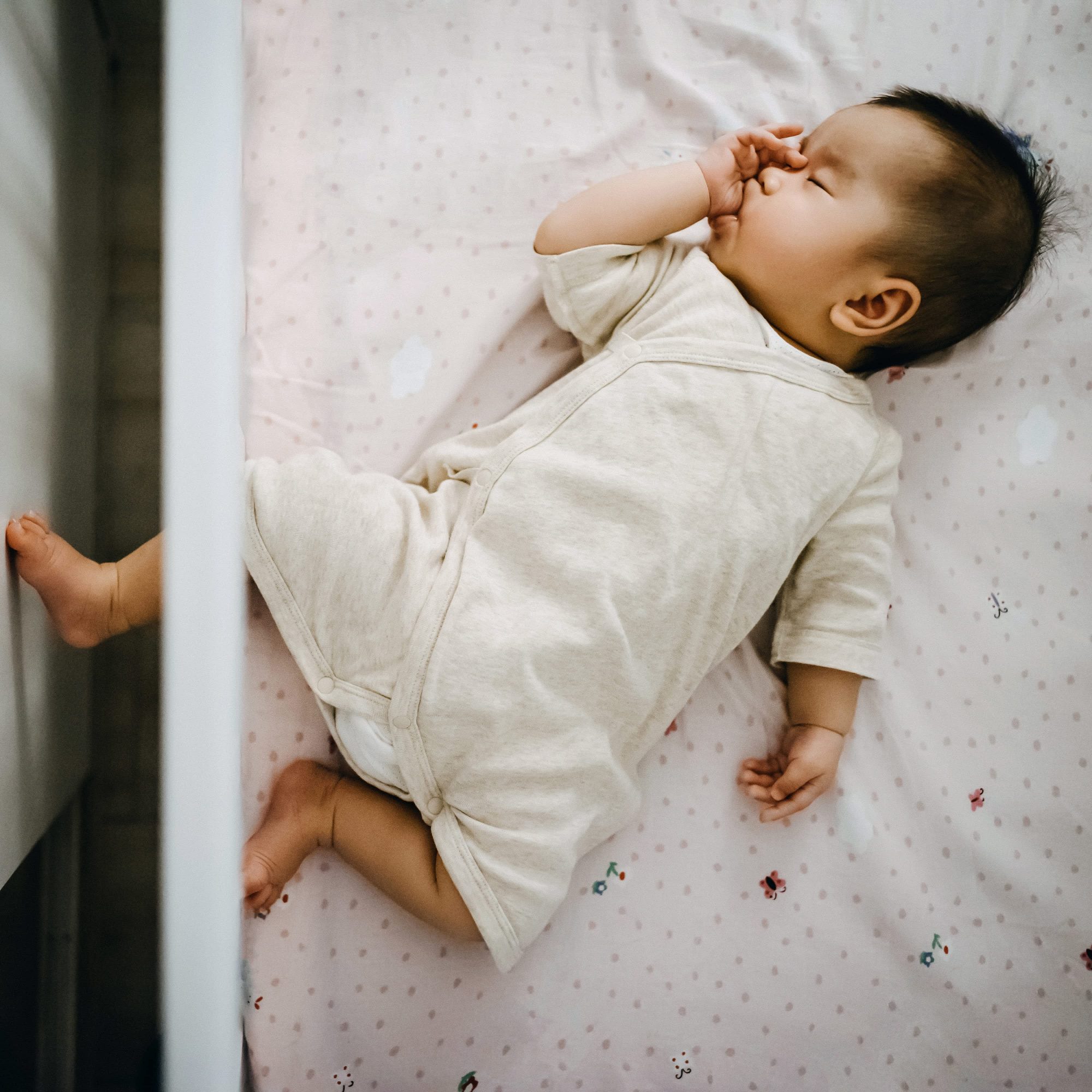
- POPSUGAR Australia
- Living
- Why New Expert Guidance Says Bed Sharing With Infants Is Dangerous
Why New Expert Guidance Says Bed Sharing With Infants Is Dangerous

Everyone seems to have a different opinion on bed sharing and cosleeping with a baby, but new guidance released today by the American Association of Pediatrics (AAP) is unequivocal: bed sharing with a baby – or even having objects around them – can pose a serious safety risk. In the AAP’s first update to its baby safe-sleep guidelines in five years, the association listed several new recommendations to lower the risk of sleep-related deaths, including from Sudden Infant Death Syndrome (SIDS) and suffocation. All are related to creating a “safe sleep environment,” per the AAP, which goes beyond bed sharing and cosleeping. The association also provided recommendations for baby sleep surface and bedding in order to create the safest sleep situation for an infant.
The AAP notes that the new guidelines are particularly crucial, given that approximately 3,500 infants die every year in the US from sleep-related infant deaths. While overall infant deaths declined from the 1990s to the 2000s, stark disparities persist between racial groups. From 2010 to 2013, the rate of sudden unexpected infant deaths among “Black and American Indian/Alaska Native infants” was “more than double and almost triple, respectively, that of white infants,” the AAP said in a press statement. Making crucial changes to an infant’s sleep situation can lower the risk and keep babies safe.
Is Cosleeping Safe?
According to the AAP, cosleeping is defined as a parent and an infant sleeping in close proximity (on the same or different surfaces) “so as to be able to see, hear, and/or touch each other.” Bed sharing is when the infant sleeps on the same surface as another person.
Bed sharing is highly discouraged by the AAP. “The AAP understands and respects that many parents choose to routinely bed share for a variety of reasons, including facilitation of breastfeeding, cultural preferences, and belief that it is better and safer for their infant,” the organization says. However, the AAP continues, evidence shows that bed sharing can’t be recommended due to its association with SIDS – the organization cites a 2013 study of more than 1,400 SIDS cases that found that more than 22 percent of the deaths involved bed sharing. Notably, bed sharing is associated with other SIDS risk factors – such as soft bedding, head covering, and exposure to tobacco smoke (for infants of smokers) – and considered a risk factor in and of itself.
In lieu of bed sharing, the AAP recommends that “infants sleep in the parents’ room, close to the parents’ bed, but on a separate surface designed for infants, ideally for at least the first [six] months.” The AAP notes that this is the “safest place” for an infant to sleep, explaining that “having the infant close by their bedside in a crib or bassinet will allow parents to feed, comfort, and respond to their infant’s needs.” In addition, “[i]nfants sleeping in a separate room are 2.75 to 11.5 times more likely to die suddenly and unexpectedly than infants who are room sharing without bed sharing.”
What Surface Should Infants Sleep On?
For sleep, the AAP recommends placing an infant on a “firm, flat, noninclined sleep surface,” such as a tight-fitting mattress in a safety-approved crib, covered by a fitted sheet. “[N]o other bedding or soft objects” should be on the sleep surface to reduce the risk of suffocation or wedging or entrapment,” the association adds.
Infants should also sleep on surfaces inclined less than 10 degrees. A steeper incline allows babies to “more easily flex their trunk and lift their head,” which allows them to roll onto their side or stomach and increases the risk for “muscle fatigue and potential suffocation.” That includes products like car seats, strollers, and infant slings – all places where babies inevitably fall asleep. When this happens, the AAP recommends moving the baby to a flat, firm surface to sleep.
Bed sharing will continue to be a hot topic among parents and caregivers, so it’s worth taking the AAP’s new guidance into consideration, knowing that there is an increased risk of death for infants who share a bed and sleep on surfaces that aren’t safety-approved for infant sleep. “It’s essential for families and pediatricians to partner with each other, to build trust and have thoughtful conversations about how to keep children safe by lowering risks,” Rebecca Carlin, MD, FAAP, coauthor of the AAP’s statement and technical report, said in the statement. Make sure to talk to your pediatrician if you have any questions about your baby’s sleep situation.

